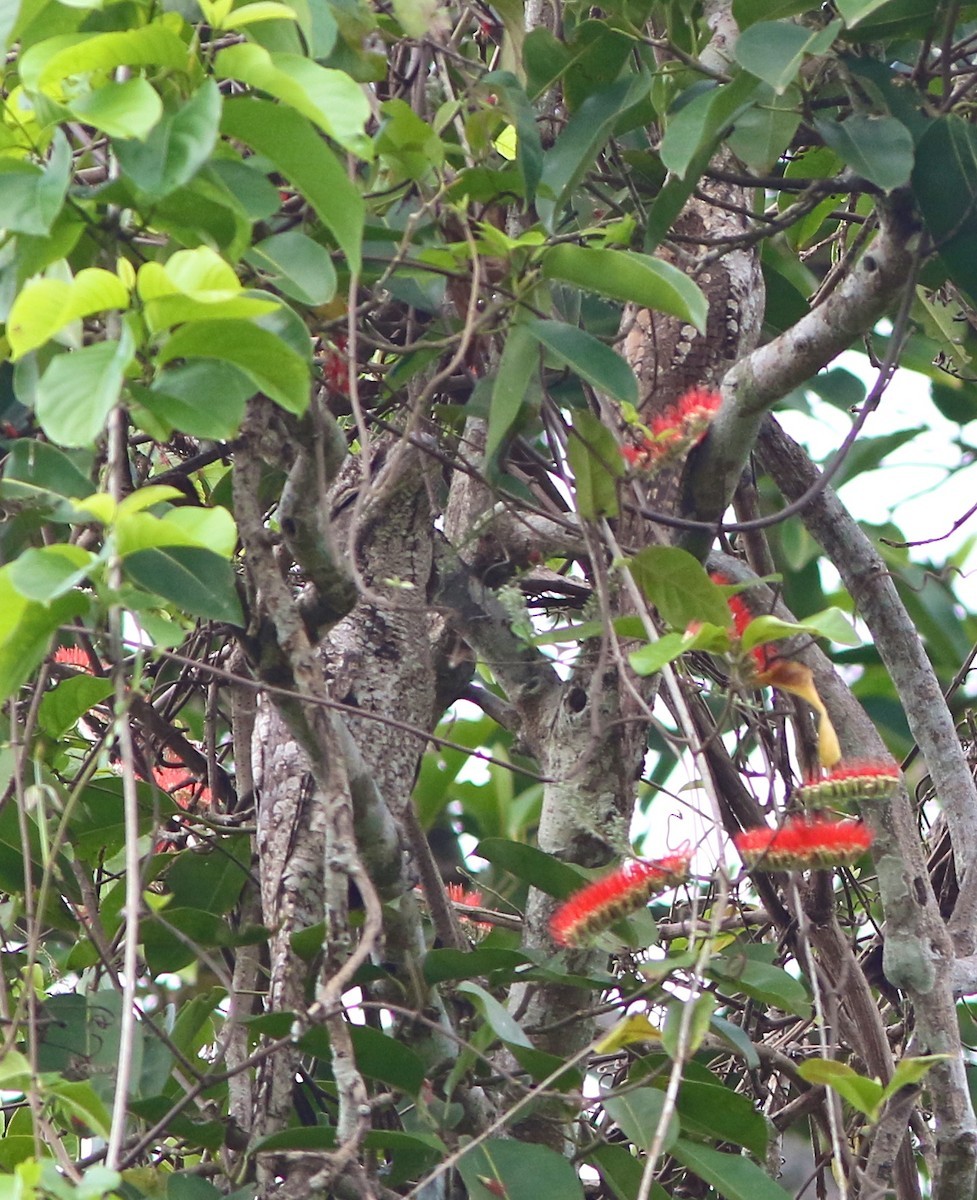Marbled Frogmouth
A species of Australo-papuan Frogmouths Scientific name : Podargus ocellatus Genus : Australo-papuan Frogmouths
Marbled Frogmouth, A species of Australo-papuan Frogmouths
Botanical name: Podargus ocellatus
Genus: Australo-papuan Frogmouths
Content
Description General Info
 Photo By Don Roberson
Photo By Don Roberson Description
The marbled frogmouth (Podargus ocellatus) is a bird in the family Podargidae. The species was first described by Jean René Constant Quoy and Joseph Paul Gaimard in 1830. It is found in the Aru Islands, New Guinea and Queensland. Its natural habitats are subtropical or tropical moist lowland forest and subtropical or tropical moist montane forest. There are five subspecies recognised; the nominate ocellatus is found in New Guinea and surrounding islands. Two subspecies are found on islands of Papua New Guinea; intermedius is found on Trobriand Islands and D'Entrecasteaux Islands, meeki is endemic to Tagula Island. Australia has two subspecies; marmoratus is found on Cape York Peninsula, plumiferus (known locally as the plumed frogmouth) is found in south-east Queensland. The Conondale ranges in Queensland's Sunshine Coast is considered a stronghold for the plumed frogmouth; notable populations are within the Conondale National Park. The species is rare and is listed as vulnerable in Queensland and occurs in subtropical rainforest and vineforest at altitudes from 50–800 m. The species roosts in the canopy of and is considered cryptic and extremely hard to find or study. Current populations are threatened by land clearing, inappropriate fire regimes and timber harvesting with future impacts of climate change posing additional risks. There have been estimates of the current pairs in the Conondale ranges being around 800 pairs with the current range of the species is just under 2000 ha with some potential future habitat increase in population being created by regenerating rainforest previously logged. Its specialised habitat requirements being un-logged pristine forests, the species is considered extremely vulnerable due to significant habitat reduction. Future harvesting of native timber in the Conondale region also poses risk. Rigidipenna inexpectatus, endemic to four islands in the Solomon Islands, was formerly considered a subspecies. It was split into its own genus, Rigidipenna, in 2007. 
Size
48 cm
Nest Placement
Tree
Feeding Habits
Marbled Frogmouth's diet primarily includes large insects like beetles and grasshoppers, occasionally a frog. Hunts by diving from a perch to snatch prey from various surfaces, using a shallow glide. Prey is often beaten before consumption.
Habitat
The marbled Frogmouth predominantly resides in humid forest environments, including both pristine rainforests and forest edges. It is also prevalent in tall secondary forests and vine forests. This species adapts to various woodlands, including the altered habitats of younger monoculture plantations like hoop pine. It frequents areas with dense vegetation and is usually associated with lowland forests but can also be found in regions with a broader range of forest types, such as gallery forests along creeks and adjacent eucalypt-dominated landscapes.
Dite type
Frugivorous
General Info
Feeding Habits
Bird food type

Fruit

 Photo By Don Roberson
Photo By Don Roberson Scientific Classification
Phylum
Chordates Class
Birds Order
Nightjars and Relatives Family
Frogmouths Species
Marbled Frogmouth